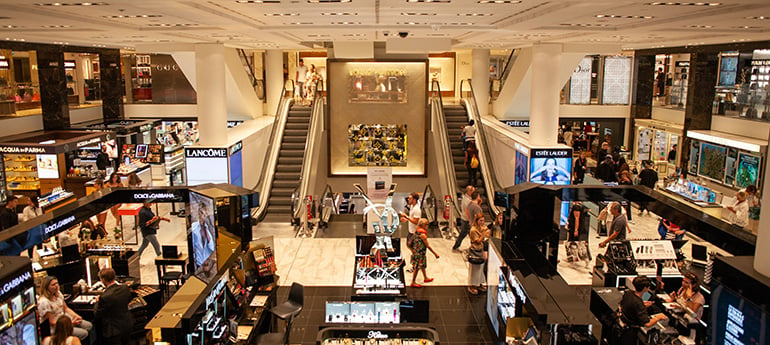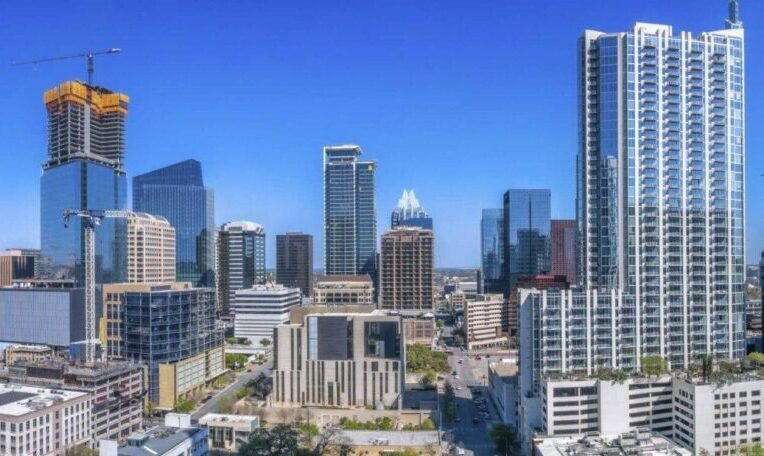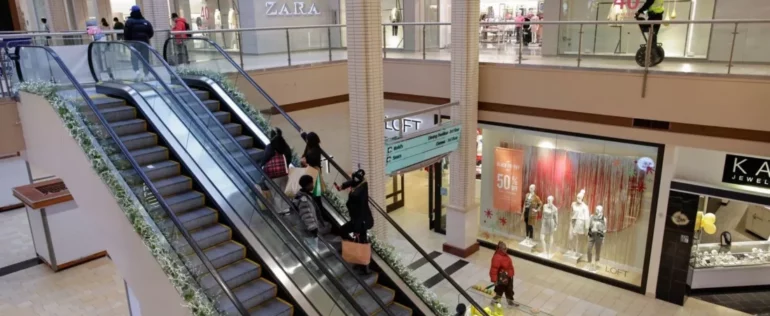
Multifamily Rents to Grow 2.4% by 2026
Spring 2025
What’s the outlook for rents across key U.S. markets? Multifamily rents are expected to continue to climb in 2025 as a widening supply and demand imbalance drives pricing for apartments across the U.S.
Origin Investments’ 2025 Rent Growth Forecast shows national annual year-over-year (YOY) rent growth will increase by 2.4% by January 2026 — and between 4% and 5.7% in markets such as Colorado Springs, Dallas, Jacksonville, Las Vegas, Orlando, Raleigh and Tampa. The report focuses on Class A properties and is based on the firm’s proprietary suite of machine learning models, Multilytics.®
Rent growth gains in the West, Northeast and Southeast regions of the country are expected to be at or above the 3% historical national average. The Southwest region is an outlier where YOY rent growth is predicted to be only 0.2%.
“We’re seeing record delivery of new product, the result of unprecedented new development that broke ground three plus years ago, when interest rates were at their lowest,” said David Scherer, co-CEO, Origin Investments. “But that tremendous wave of deliveries isn’t being replaced. In the absence of the next wave, I see a world where rents continue escalating in the next one, two, three and maybe even four years.”
In the Multilytics report, Origin’s five-year compounded annual growth rate (CAGR) for rents in the 15 cities where it invests and/or owns and manages multifamily assets all are greater than 4.0%, and ranges from 4.2% in Austin to 5.7% in Tampa.
 Multifamily development to reach 600,000 units
Multifamily development to reach 600,000 units
Newmark projects the number of expected deliveries in 2024 to be approximately 600,000. However, the pipeline of deliveries is expected to fall precipitously, by 15.2% in 2025 and 53.8% in 2026. Demand for units, especially in growth markets around the country, isn’t expected to change, with absorption keeping pace with mew deliveries.
At the market level, Origin is predicting rent growth in 15 targeted markets where the firm continues to evaluate future potential developments or acquisitions. According to Multilytics, by June 2025 all but three of Origin’s target markets will return to positive growth, with Austin, San Antonio and Denver lingering in the negative. However, by January 2026, all markets will return to positive territory, with seven markets topping 4% and six increasing by at least 3%. Two markets will have rent growth from 1.5% to 2.0%.
The Origin markets experiencing the greatest YOY annual rent growth for Class A apartments are Orlando, 5.6%; Jacksonville, 5.6%; Las Vegas, 4.6%; Tampa, 4.4%; and Raleigh, 4.4%. The two markets with rent growth lower than 2% are Denver, 1.7% and Austin, 1.6%. YOY Class A apartment growth will exceed 4.0% in Miami (4.3%) and Seattle (4.4%); meet or exceed 3.0% in New York (3.0%), Los Angeles (3.0%) and San Francisco (3.1%), and exceed 2.5% in Chicago (2.6%) and San Diego (2.8%).

Supply Chain News: Port unrest looms
May 2024
Importers brace for potential East Coast port strike
Just six months after a contentious, 13-month port strike impacted 29 West Coast ports, the nation is bracing for an East Coast port strike that could send supply chains into another tailspin during the peak holiday shopping season. This is one more reminder of the growing power of the labor movement at a time when consumers are increasingly focused on convenient retail experiences, including those that rely on workers to ship and deliver goods to their doorstep.
What’s at stake?
- Container volume — The movement of millions of containers of goods from around the globe into the North American port network.
- European imports — The flow of nearly one-quarter of the U.S. containerized volume of imports from Europe
- Holiday buying — The stable flow of retail goods during the busy summer-to-fall holiday buying season
- Exports of energy sector, automotive goods – Including goods for growing green energy initiatives and the automobile industry
Importers shift as East Coast port strike looms
With the East Coast emerging as the top gateway for imports coming from Asia through the Panama and Suez canals — and a preferred route for retailers tapping into growing population centers in the Sunbelt and the Southeast – even the threat of disruption has importers scrambling. The timing of a strike sets up retailers to move quickly to evaluate and likely shift trade routes to get ahead of any port disruption. Here’s why:
- East Coast ports handle a diverse range of goods, from automotive parts to pharmaceuticals to myriad home supply and retail goods.
- Ports from New York/ New Jersey to Miami and Houston provide connection to some of the largest metro areas in the country.
- The strike could get underway in the final months of the presidential race and during the retail industry’s big push toward holiday shopping and deliveries.

What’s on the bargaining table?
The International Longshoremen’s Association (ILA) contract, set to expire at the end of September, covers pay and other labor issues for 70,000 dockworkers on the East Coast. This is the first East Coast port strike since 1977 and it is expected to impact port activity along the East Coast and into the Gulf Coast, including at three of the five busiest ports in the U.S., with a combined volume of 15 million TEUs (the standard container measurement) in 2023. The three busiest East Coast ports include:
- The Port of New York and New Jersey
- The Port of Savannah, GA
- The Port of Houston
The union is riding the wave of labor uprising in recent years, including:
- The 2023 Teamsters’ contract with 340,000 UPS workers that secured increases in wages and benefits, and improved working conditions, totaling $30 billion over five years.
- Disruption from the threat of a 2023 UPS strike, which was averted ahead of the busy holiday shopping season.
- The 2023 United Auto Workers’ strike, which lasted 46 days and caused disruption to production across the Big Three automakers, resulted in large pay increases and other benefits for workers.
Who wins with port shifts?
In the short-term, an East Coast labor strike is likely to shift volume back to the West Coast ports, which have not regained their activity following their recent strike. Given the growing prominence of East Coast ports and their reputation for moving goods efficiently and without the disruption that periodically impacts West Coast ports, this is a critical time of reckoning. A strike this fall could deliver a crippling blow to the port system just ahead of the holidays and the general election.
Check out this Avison Young newsletter for more details.

Supply Chain News: Retailers say “Just Keep it!” for returns
January 2024
After the surge in holiday shopping comes the inevitable period of retail returns. Yet, retailers have another twist this year! Many are finding some retail returns too costly to process and telling consumers to “Just keep it” instead. Consider that:
- U.S. consumers are expected to return about $170 billion worth of holiday purchases from the 2023 season.
- That’s nearly 30% more than last year, according to Optoro, a retail logistics consulting firm.
- All those coats, shoes, computers, and general household goods become a big headache for retailers, as they flow back to stores and warehouses to be checked in and restocked.
In recent years, retailers have added some creative measures to cut the cost of returns while also balancing the need to accommodate customers. This year many are using the “Just keep it” strategy on some items that are costly to ship back.
Retail returns and more returns
Retail returns from 2023 holiday shopping typically start the day after Black Friday and go into February. They are a significant strain on the retail system, as they have to be transported, sorted and then resold or thrown out for a loss.
In recent years, retailers have added a variety of options to cut down on their costs for returns, from offering store credit to charging for returns and encouraging consumers to bring online purchases back to their stores. “Easy returns are a significant marketing vehicle to build customer loyalty and develop a pipeline of repeat customers and lower customer acquisitions costs,” says Carl Quesinberry, Senior Director, Avison Young Consulting Services, who has extensive experience in occupier advisory services.
For the 2023 shopping season, nearly 60% of U.S. retailers surveyed were telling consumers to keep items that were too costly to ship back, such as small kitchen utensils or large furniture pieces, according to goTRG, a returns services firm that surveyed 500 executives with 21 major retail companies. About 26% of companies have such “no return” policies in place, but they are not always publicized due to concern over the potential for fraud.
For more on this trend and how it’s impacting retailers and warehouse operators, click here.

Tracking multifamily rental demand
Sept. 2023
Multifamily rental demand has become a hot topic in commercial real estate, as rising interest rates have pushed many would-be home buyers to the sidelines — and into the already crowded rental market. As multifamily developers plan for life beyond the current economic uncertainty, they are closely tracking population trends. Where are the renters going next?
A recent RentCafe report notes that, for the third consecutive month, Arlington, Va., is the most popular market searched on their website. This market has become a draw for people wanting to live in or near the nation’s capital or work in Baltimore. Among the selling points are strong amenities and job prospects and the charm of Arlington’s vintage neighborhoods. The market also offers proximity to top tier educational venues, such as Georgetown and George Washington universities.
The rest of the Top 10 rankings cover a wide spectrum, from the Midwest to two New York City boroughs to Cincinnati and Albuquerque.
Mortgage lending declines
According to National Mortgage Professional, the volume of residential loans dropped to 1.25 million in the first quarter of 2023, down 19% from the previous quarter and the fewest since late 2000. This marks the eighth consecutive quarterly decline, as higher interest rates pushed many buyers to the sidelines. Loans for both purchases and refinancing declined 85% year-over-year.
Here’s the Top 10 list of the most searched markets, as measured by RentCafe.
- Arlington, VA
- Kansas City, MO
- Queens, NY
- Overland Park, KS
- Atlanta, GA
- The Bronx, NY
- Minneapolis, MN
- Cincinnati, OH
- Albuquerque, NM
- Omaha, NE

UPS Strike Could Disrupt E-Commerce
July 2023 — The rapid growth in e-commerce has dramatically changed consumer buying habits and created expectations for quick shopping and delivery. The prospects of a UPS strike, however, could upend those “always on” shopping habits and strike a blow to the upcoming Back-to-School shopping season.
The Teamsters union representing 340,000 UPS warehousing, transportation and delivery workers recently announced plans to strike if new contract terms are not met by July 31, when the current contract ends. A strike would set off what could be the largest U.S. labor strike in decades. As UPS fulfills about 25% of parcel deliveries in the U.S. — or approximately 20 million packages a day– a work stoppage could have a significant impact on the flow of goods across the country. While the strike may still be averted through ongoing negotiations, retailers are preparing as they face the critical back-to-school and holiday shopping seasons.
Labor woes push against strong e-commerce growth
The UPS labor dispute is the latest in a series of labor issues impacting the country, as many employee groups ask for higher pay and improved working conditions to compensate for their increased work load during the pandemic. Many are tracking revenue gains by UPS and other logistics companies and asking for higher compensation. The UPS strike announcement comes on the heels of work stoppages by longshoremen and port workers at West Coast ports and a threatened strike last year by U.S. rail workers.
The 12-month trailing profits at UPS rose 30 percent between Q4 2020 and Q4 2022, according to financial date company Macrotrends. Since the last five-year contract achieved by the Teamsters and UPS in 2018, the company profits increased to $11.5 billion, due in large part to the surge in online shopping during the pandemic. UPS and other shippers are now seeing a modest decline in activity due to a softening in the market, but activity levels are still notably higher than before the pandemic.
UPS workers last went on strike in 1997 in a 15-day walkout that was devastating for the company. While some experts predict that a short strike would be less severe than the strike in 1997 due to the many shipping alternatives today, it might still disrupt the supply chain at a critical time for retailers. As millions of consumers rely on package delivery for clothing, food, electronics and other goods, a strike would bring a large portion of the economy to a standstill. It could also have implications for future labor issues, as unions are trying to organize Amazon workers and those at Starbucks and other companies.
See this Avison Young article for more details.

Q1 2023 CRE Update: Uncertainty and Financial Risks Dominate
Q1 2023: Pervasive uncertainty amid rising interest rates
At the three-year mark since the onset of the pandemic, the commercial real estate market is still trying to find that “new normal.” With lending restrained, pricing uncertainty and concerns over a recession, the market is navigating unchartered waters as the economy continues to rebuild. Among the top trends to watch are:
- Uncertainty in the Financial Markets – Given the Fed’s aggressive increase in interest rates, deal flow has slowed
- Lending Pull Back, Future Risks — Bank failures have led to significant tightening of financial conditions and fear of more failures
- CRE Loan Maturities/Defaults — Growing fears of significant defaults, losses in office sector
- Property Pricing Adjustments — A bid-ask spread is keeping deal flow limited, but how will new pricing impact owners, occupiers and investors?
Here’s a look at market metrics from industry technology and investment leader LightBox. These metrics provide an early indicator of trends in the investment, broker, valuation, lending, and environmental due diligence segments.
Record high inflation and rising interest rates
Record high inflation and rapid increases in interest rates created significant headwinds at the start of 2023. Investment activity stalled. Then 1Q23 ended with a gut punch from unexpected bank failures and doomsday headlines about massive defaults in the office sector.
The market had to digest a rapid mix of developments, including fundamental shifts in demand for real estate, and the first bank failures since the Great Financial Crisis, among other issues. Amid the most aggressive tightening of financial conditions by the Fed since the 1980s, investors and lenders are challenged to pencil deals confidently — or forecast future valuations. While the near-term forecast is in flux, there still is an even mix of headwinds and tailwinds for the near term.
In early February, the Fed signaled that slowing inflation, along with other indicators, warranted a pull back in the pace of rate hikes. An expected 50 bps increase became a 25 bps increase in February, followed by the same in March. This was a welcome dose of optimism as the market digested news of Silicon Valley Bank and Signature Bank failing and concern grew over the possibility of an expanded banking crisis.
The LightBox Commercial Real Estate Activity Index shows a broader market decline in commercial properties listed for sale (blue line), a divergence from typical market conditions where the peak in listings coming to market in 2Q22 would lead to an uptick in the services that support deal closings (environmental due diligence and appraisals). But 2022—and the start of 2023—has been anything but normal. Other key takeaways include:
- Buyer profile shifts — While owners are listing properties for sale, the buyer universe is constrained and tends to be cash-only buyers, private capital or family funds rather than the typical investors. The buyer pool is still at historically low levels
- Transaction indicators fell — Confidentiality agreements, an indicator of how the size of the buyer pool is changing over time, fell from a high of 131 per deal last January to only 65 by year-end 2022 as buyers were shut out of the market by higher capital costs or chose to wait on the sidelines. In 1Q23, the average number of CAs per deal increased slightly to 72, still well below the high-water mark of a year ago. CA levels for the main asset classes (office, multifamily, industrial and retail) are likely higher or lower given the significant variations by asset class.
- Environmental due diligence and appraisal volumes decline – As measured by LightBox’s ScoreKeeper model (environmental) and C360/RIMS (appraisal) platforms, volumes declined in response to a slower transactions market, with environmental reports ending 1Q23 down 40% YOY and appraisal volume down 43% YOY.

Interest Rate Increases Stall Deal Flow
December 2022
The commercial real estate (CRE) industry is in unchartered waters, given the current interest rate increases and related economic upheaval that is slowing deal flow and creating significant uncertainty. All eyes are on debt and equity financing at this critical time, given the impact on transaction activity. This LightBox blog examines CRE financing and dives into:
- The impact of rising interest rates on the cost of capital
- How investors and brokers are navigating shifting lending requirements
- The impact of higher cap rates
- What’s ahead for CRE investment
“Investors are navigating a challenging environment where lending requirements, property valuations and debt service coverage are under more intense scrutiny, ” says Tina Lichens, Senior Vice President of Broker Operations for LightBox. “As buyers and sellers reevaluate their positions heading into 2023, we expect to see a rebalancing of pricing expectations that will ultimately lead to renewed growth in investment activity.”
While the first half of 2022 saw strong investment activity, interest rate increases pushed cap rates higher and caused a significant retraction in commercial real estate deal volume. As major money center banks retreated in the third quarter, the CBRE Lending Momentum Index, which tracks the pace of CBRE-originated commercial loan closings in the U.S., declined by 11% compared to the second quarter. This was nearly 5% below the level recorded in the third quarter of 2021.
Interest Rate Increases Shutting Down Buyers
The higher cost of capital has shut some buyers out of the market, and, as a result, third quarter investment was down 18% year-over-year and 16% below the second quarter. In response to interest rate increase and changing conditions, 28% of environmental due diligence consultants have lender clients who halted or curtailed originations in the third quarter, according to LightBox’s latest survey data revealed. “For loans that are proceeding, lenders are exercising far more scrutiny on assumptions about occupancy, rents, and property values. In today’s uncertain environment,” according to Dianne Crocker, LightBox’s principal analyst, “the numbers have to make sense.”
A Look at Credit Losses and Delinquencies
Larger banks have been more prudent in anticipating potential credit losses, but the credit losses and delinquencies haven’t been seen yet, says Jon Winick, CEO of Clark Street Capital. “Time will tell if they were ahead of the curve enough, anticipated problems that never occur, or had their heads in the sand.”
Given the backdrop of rising rates and the potential recession, credit risk and having a good handle on property values will be top of mind for lenders, says Raj Aidasani, Senior Director, CREFC. “Our market has yet to fully absorb the dramatic changes over the last year and, in addition, the standoff between buyers and sellers is expected to continue. Lower transaction activity translates to lower market price transparency, making the credit work lenders perform even more critical.”
Other key take aways:
- Underlying property performance remains strong for many asset classes, especially those that can raise rents to account for higher costs. Many companies and properties have experienced strong years given the momentum in 2021 and the start of 2022.
- Among the property sectors to watch are multifamily, which has seen record rent growth, and industrial, due to questions about whether demand drivers will remain as strong long-term.
- Debt capital is more difficult to find for office, hotel and retail properties, as lenders reduce their exposure to asset categories with higher risk.
- Many lenders are cautious about the office sector, given its lower occupancy levels due to return-to-work policies. Recent layoffs in the tech sector could add another layer of stress to some office properties.
Property Appraisal Volume Shrinks
Growing economic weakness has also prompted lenders to reassess their loan allocations as they attempt to balance portfolios that are seen as too heavily weighted for real estate. “We’ve seen a dramatic slowdown in appraisal activity this year, which provides an early indicator for loan activity,” says Candi Coleman, MAI, Head of Lender Strategy with LightBox. “The appraisal industry has been very busy for the past 18 months and now we’re in a holding pattern.”
The slowdown in lending also puts the spotlight on maturing loans and a potential risk crisis as cap rates and interest rates rise, says Coleman. “As a wave of loans sets to mature over the next 12 to 24 months, property owners will be faced with the potential for higher debt service and possible decreasing values. That puts borrowers in a tight spot when looking to refinance their loans.”

Black Friday Sales Rise but Contrarians Hold Back
Nov. 25, 2022– As the retail spend is tallied for Black Friday (and the overall retail sales stretch from Halloween to Cyber Monday), Business Insider looks at contrarian efforts to shun the hype and redirect the focus to supporting employees and charities. REI was among the first to take the big step in 2015, giving employees a paid day off and encouraging them to get outside and enjoy the day. See why IKEA, Patagonia, Google, and others bucked the trend for 2022.
Here’s a round up of Black Friday results and what’s ahead for the rest of the shopping season:
Black Friday Sets Record for 2022
An analysis by Adobe Analytics notes that online Black Friday sales in the U.S. hit a record-breaking $9.12 billion this year, despite shifting economic conditions and some consumers’ concerns about scaling back on expenses. This year’s sales were 2.3% higher than last year. Among the key growth sectors were electronics, smart home equipment, toys and exercise equipment.
On a cautionary note, CNN notes that consumers are tapping into their savings to pay for goods and boosting their credit card balances in the process. Check out this CNN story for more.
And, here’s a look at the winners and losers, courtesy of Retail Dive.
Getty Images photo.

